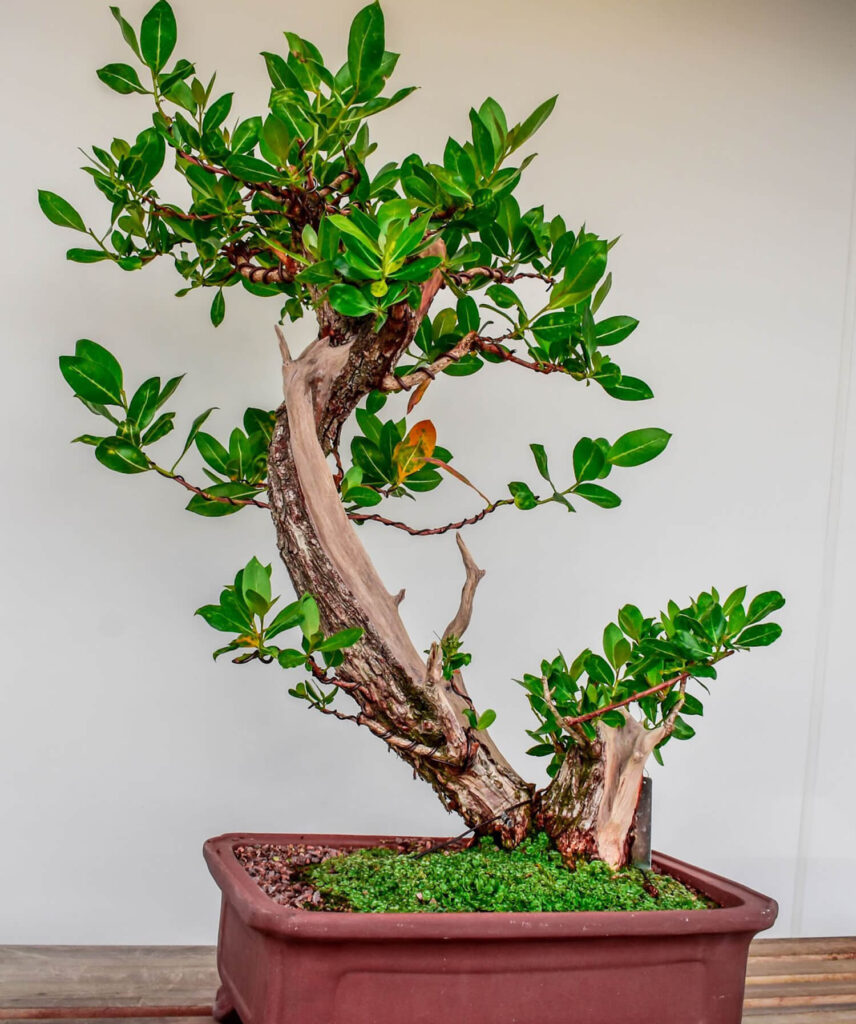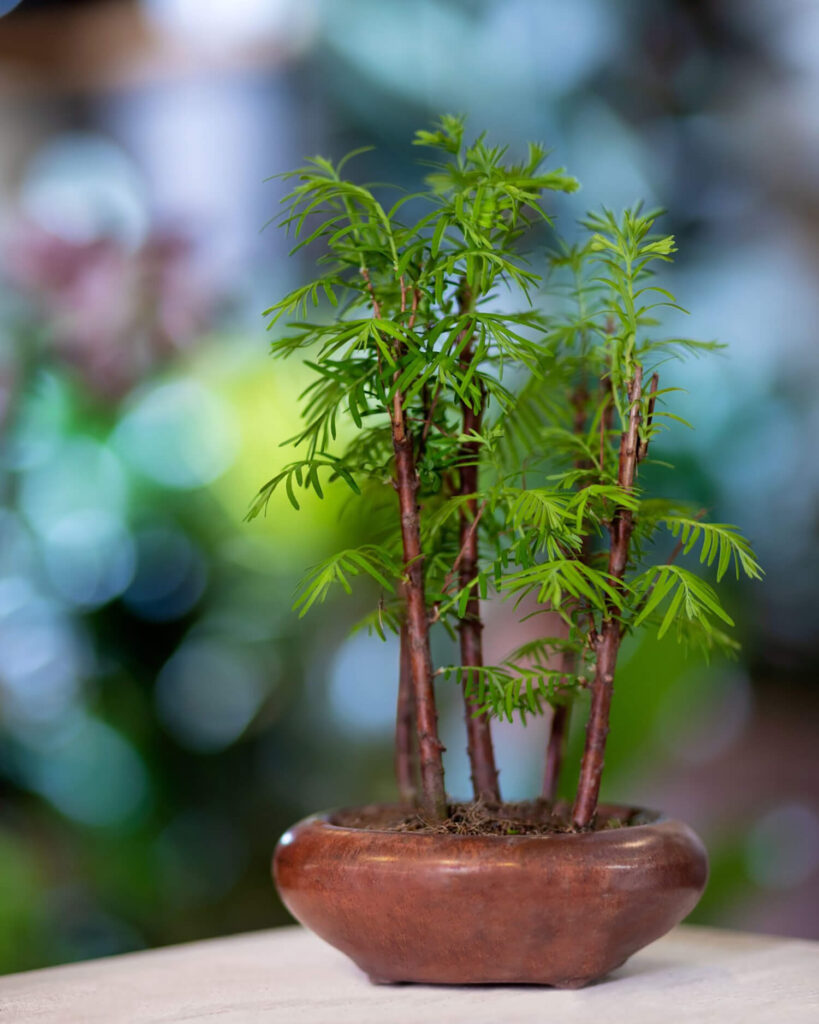Are you looking forward to growing your next bonsai masterpiece but can’t decide which bonsai tree species to cultivate?
Then, let me introduce to you some of the hardest tree species to grow in terms of maintenance, styling, and availability in the global market.
To know which ones can thrive in your garden, let’s briefly discuss their background and pros & cons.
Tree species mentioned in this article:
- Cherry blossom
- Gardenia
- Buttonwood
- Bamboo tree
- Cedar
Continue reading to learn:
- 5 most difficult miniature tree species to grow.
- The pros and cons of each dwarf tree species.
- How much each miniature tree species typically cost.
- And much, much more…
5 Challenging Bonsai Tree Species for Experts
Studying the nature of each tree species, especially hard-to-grow ones, is necessary to know which species can grow in your care.
To help you decide which tree to cultivate, let’s discuss their most significant features:
1. Cherry Blossom

| Botanical name: | Prunus serrulata |
| Other names: | Japanese cherry, Sakura |
| Tree type: | Broadleaf deciduous |
| Native habitat: | Japan, China, and Korea |
| Placement: | Outdoors |
| Cost range: | $40 to $120 |
If you appreciate the soft beauty of sakura trees, then grow a cherry blossom bonsai.
These deciduous species produce white or pink flowers in spring. They fall off after about a month, forming a carpet of delicate blossoms on its soil surface.
Aside from that, it also produces tiny, red berries that can be too sour for some people to eat.
Another notable thing about this species is that its trunk forms dark horizontal lines called lenticels as it ages.
Pros:
- Frost-hardy
- Produces attractive flowers and delicious fruits
Cons:
- Not easy to keep in shape
- Doesn’t like very calcareous water
- Old trees don’t tolerate heavy root pruning
- Susceptible to various pests and diseases
- Needs protection from extremely low temperatures
2. Gardenia

| Botanical name: | Gardenia jasminoides |
| Other names: | Jasmine, Cape Jasmine |
| Tree type: | Broadleaf evergreen |
| Native habitat: | Tropical and Subtropical regions of Southeast Asia and South Africa |
| Placement: | Both indoors and outdoors |
| Cost range: | $42 to $715 |
Another beautiful bonsai tree that you can grow is gardenia. However, this species is not easy to care for, so you may need to master your bonsai techniques first before working with it.
This subtropical tree has pointed, dark green, glossy leaves.
In summer, it grows creamy-white flowers with a strong, pleasant scent. If pollinated, these will produce orange-colored fruits that are often cultivated for medicinal purposes.
Pros:
- Endures frost
- Can be easily propagated
- Produces sweet-smelling flowers
Cons:
- Doesn’t tolerate cold draught
- Sensitive to changing environment
- Not easy to keep healthy and growing
- Susceptible to scale, aphids, and mealy bugs
Check out: Where to Find the Best Bonsai Trees for Sale?
3. Buttonwood

| Botanical name: | Conocarpus erectus |
| Other names: | Button mangrove |
| Tree type: | Broadleaf evergreen |
| Native habitat: | Tropical regions of America and Africa |
| Placement: | Preferably outdoors |
| Cost range: | $27 to $18500 |
Buttonwood also makes a great bonsai material since it has natural jins and shari.
Since it already has a driftwood-like appearance, styling and aging the tree won’t be a problem anymore. However, this species is hard to maintain, so make sure to study its nature first.
This subtropical hardwood tree produces tiny fruits that look like small pine cones or dried raspberries.
Pros:
- Fast growing
- Grows vigorously
- Withstands drought and heat
Cons:
- Roots are brittle
- Needs winter protection
- Requires constant pruning
- Susceptible to pests and diseases
4. Bamboo Tree

| Botanical name: | Bambusoideae |
| Tree type: | Broadleaf evergreen |
| Native habitat: | East Asia |
| Placement: | Outdoors only |
| Variety to get: | Bambusa multiplex |
| Cost range: | $20 to $150 |
Bamboo trees are also a popular choice among advanced and professional bonsai growers.
However, it can’t be easily styled as a classic bonsai tree, so most artists use it instead to create wonderful bonsai forests.
This species grows fast, so you’d need to prune the leaves more frequently to control their growth and maintain the shape of the canopy.
Pros:
- Hardy
- Fast growing
- Can survive in most places
- Hardly susceptible to pests and diseases
Cons:
- Has denser growth
- Requires frequent pruning
- Needs lots of water and moisture
- Difficult to style as a classic bonsai
5. Cedar

| Botanical name: | Cedrus |
| Tree type: | Coniferous evergreen |
| Native habitat: | Mountains of the Western Himalayas and the Mediterranean region |
| Placement: | Both indoors and outdoors |
| Species to get: | Lebanese cedar (Cedrus libani), Himalayan cedar (Cedrus deodara), Cyprus cedar (Cedrus brevifolia), and Atlas cedar (Cedrus atlantica) |
| Cost range: | $18 to $2950 |
Aside from being high-maintenance, cedar bonsai trees are quite rare.
Cedar is a tall tree with an elegant silhouette despite having a ragged, grayish bark. It’s often styled upright to showcase its beautiful, long trunk.
Since it’s a conifer tree, it grows silvery-blue needles along its twigs, similar to larch. These needles can create a dense canopy, making the tree look more put together.
Pros:
- Young trees are flexible
- Has several valuable features
Cons:
- Quite rare
- Bark is sensitive
- Prone to root rot
- Wounds heal slow
- Needs winter protection
- Doesn’t tolerate heavy root pruning
- Susceptible to pests and diseases
Key Takeaways:
Growing a bonsai masterpiece is expensive and time-consuming, so make sure to understand first the nature of the tree you want to cultivate.
That way, you can ensure its growth and health and avoid losing all your investments.
To help you decide which one to grow, here are the key takeaways from this article:
- Buttonwood has natural jins and shari.
- Gardenia produces orange edible fruits.
- Cherry blossom flowers last for about a month.
- Cedar bonsai tree materials are quite rare to find.
- Bamboo trees are best suited for creating bonsai forests.
That’s all for today! We hope to see your bonsai masterpiece in the near future.
You might also be interested in: 14 Best Intermediate Evergreen Bonsai Tree Species to Grow





0 Comments